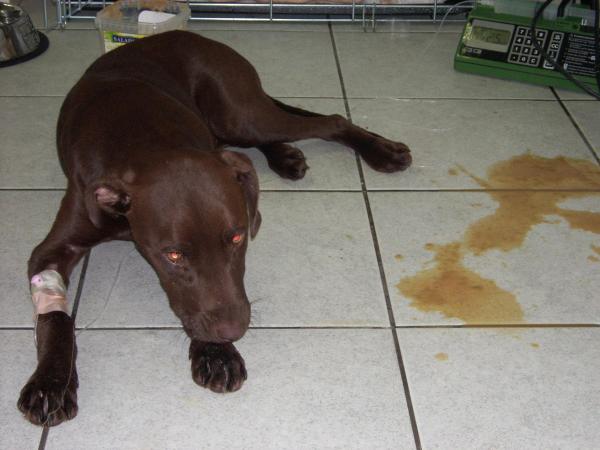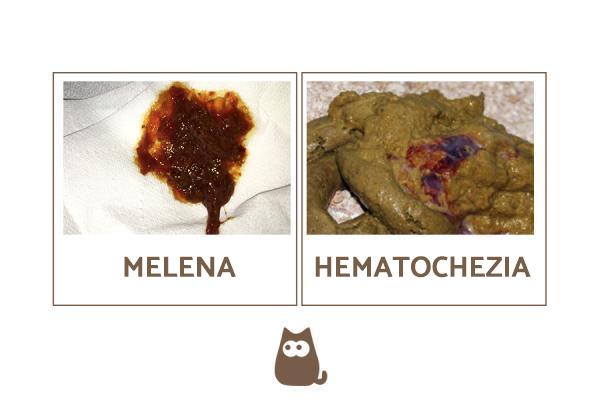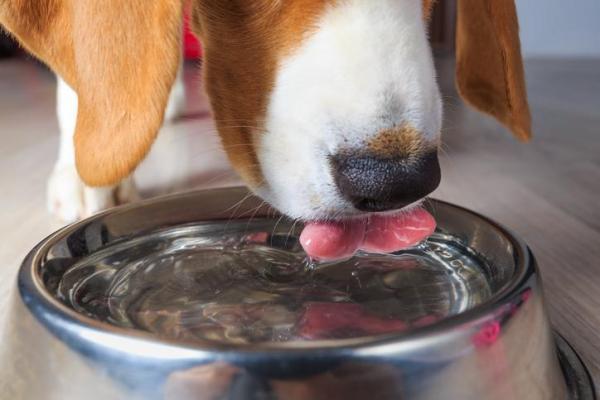Types of Diarrhea in Dogs - Puppies, Adults and Seniors



See files for Dogs
It is not uncommon for dog guardians to observe their canine having diarrhea. While it does mean there is some issue with their gastrointestinal tract, it doesn't mean it is a severe condition. If your dog has diarrhea you need to monitor it for frequency. If they have diarrhea regularly, there is likely some change needed in their diet or a medical issue which needs to be treated. However, the appearance, color and consistency of their stool can also help us to determine what might be wrong.
AnimalWised looks at the different types of diarrhea in dogs for puppy, adult and senior dogs. By doing so, we can see if there is a specific problem we can help with. As always, this does not replace the advice of a qualified veterinary health professional.
What is diarrhea in dogs?
Diarrhea is a relatively common disorder in dogs. It has to do with the consistency of a dog's stool, which is more liquid than healthy samples. It can happen for various reasons, but often they are relatively benign. If it occurs singularly every once in a while, it does not usually indicate a serious problem. If the dog defecates too frequently or its stools are always diarrheic, it is important we find the cause so we can address the problem.
Depending on the duration of its occurrence, there will be a case of acute or chronic diarrhea in dogs. Acute diarrhea appears suddenly and then disappears relatively quickly. Chronic diarrhea can present itself in a more gradual manner and will last for a few weeks or more. It may go away, but then return in an episodic pattern.
The main common causes of severe diarrhea are intestinal parasites, changes in the diet or ingesting substances which affect the gastrointestinal tract. However, acute diarrhea can also be a symptom of various infectious diseases. Diarrhea might also be the side effect of a particular drug and it will be up to the veterinarian's judgment whether it is worth continuing the course of medication.
Acute diarrhea cases generally do not require follow up, but it is important to monitor the dog for any concurrent symptoms. If the problem becomes worse, chronic diarrhea occurs or we observe other worrying symptoms, then we need to seek veterinary medical advice. This is particular important in puppies, senior dogs or dogs which have, for whatever reason, a compromised immune system. Animals in these cases are more vulnerable and run the risk of dehydrating quickly. This doesn't mean we shouldn't be careful with adult dogs either, particularly if they have an underlying medical condition.
Looking at the different types of diarrhea in dogs can help give an indication of what might be the cause of the problem. We should note two things before we do. Firstly, the color of the diarrhea might simply be related to the color of something they ate, so it doesn't necessarily mean it is a cause for concern. Secondly, it can be helpful to use these types of diarrhea as a reference, but it is not a replacement for a veterinarian's diagnosis.
Yellow diarrhea in dogs
We begin this review of stool types by looking at yellow canine diarrhea. As we said above, sometimes coloration is simply due to the color of the food which has been eaten. For example, eating a yellow curry might result in acute yellow diarrhea, but it does not mean there is a greater health issue present.
At the same time, the yellow coloration of diarrhea might be an indication of the presence of bile. Bile is a secretion of the gall bladder which, among other purposes, functions to aid digestion. Bile can also be found in an empty stomach, something which happens if gastrointestinal issues cause vomiting also.
Problems with the dog's liver can result in yellow diarrhea. This can also be seen on other parts of the body such as eyes, mucus membranes or skin. The symptoms of hepatic impairment begin as nonspecific and include issues such as vomiting and diarrhea which can be present in various illnesses. As the disease progresses, we find other characteristics such as:
- Hemorrhages
- Ascites
- Edema
- Encephalopathies
- Jaundice (causing yellowish coloration)
If orange colored diarrhea appears, it can be caused by hemolysis, a process which leads to the intensive destruction of red blood cells. Babesia parasites can lead to hemolytic anemia. If we suspect a systemic disease, we should go to the veterinarian immediately. Whether yellow or orange diarrhea, the causes are varied and they will need an appropriate diagnosis.

Green diarrhea in dogs
Among other colors of dog stool, green diarrhea can sometimes present. This can be due to a considerable intake of grass. Although researchers are not in consensus as to why dog eat grass, it is something which happens fairly frequently. If the dog has eaten grass which has turned their diarrhea green, there should also be remnants of the fibrous material in the stool. You will need to monitor their behavior to see if they are eating grass to cause this green diarrhea.
Bloody diarrhea in dogs
In this section we can differentiate two situations, depending on whether the blood is fresh (hematochezia) or digested (melena). If the blood has been digested, the diarrhea will look dark red, tarry or black. It is usually a sign of internal bleeding which can be a very serious problem. When the blood is fresh, it will appear the red color of fresh blood and may have clots.
A common cause of internal bleeding in dogs is due to the presence of an ulcer. This is a lesion in the mucosa of the gastrointestinal tract. There are several causes of gastrointestinal ulceration, including long-term treatment with anti-inflammatory medication. Ulcers are often a side effect, which is one of the reasons you shouldn't give dogs medication unless prescribed by a veterinarian. Older dogs with arthritis might require this type of drug which leads to the ulceration.
Another well-known cause of bloody diarrhea in dogs is parvovirus. This is a viral disease which must be treated by a veterinarian. It affects puppies, especially those which have not been vaccinated. Vaccination around 6 to 8 weeks of life should provide sufficient protection. Dogs which contract parvovirus have severe vomiting and bloody diarrhea which can cause potentially fatal dehydration. The majority of adult dogs with parvovirus show no symptoms.
Additionally, if the dog is intoxicated with certain products, this can cause hemorrhages as well as diseases such as hemophilia. These diseases prevent blood from clotting or decrease the number of platelets in the blood. Among these types of diarrhea in dogs, this is one of the most concerning since it can led to internal bleeding, shock and even death. A clot or small amount of blood may be due to a rupture in the capillaries, parasites or other problems with the digestive system. If we see bloody diarrhea in dogs, it is imperative we take them to the vet in case something like this is the reason.

White diarrhea in dogs
If we see white diarrhea in dogs, we need to distinguish between the coloration of the actual feces and the presence of a foreign object. Homemade dog food is often made with rice to bulk it out, so it could simply be the presence of rice or pasta. Certain parasites can also look like these food products, so we need to be careful. Dogs are well-known for eating things they shouldn't such as pieces of fabric or clothing. It could also be due to ingesting white food substance such as ice cream which dogs can't process, resulting in diarrhea. Although unpleasant, we should examine the stool to see if these are causing the white change.
Eating of inappropriate objects can be fairly normal, but it can also be a sign of behavioral problems such as pica syndrome. This is when stress or some other trauma causes the dog to ingest objects they shouldn't compulsively. It usually takes a qualified canine behaviorist to resolve the problem.
Diarrhea with mucus in dogs
This type of diarrhea in dogs manifests in a gelatinous appearance. For example, when parasites such as coccidia infest the dog, mucus in their stool can appear. Internal parasites are not visible, although they can result in eggs or other parasite material being present in the stool. Dogs can become infested without our knowledge, so we need to deworm them regularly to avoid it. While we will also need to look out for other symptoms, parasitical infestations are often asymptomatic. Diarrhea is usually one of the first which presents.
Treatment of diarrhea in dogs
If the dog is not of high risk, there are no other symptoms and is not dehydrated, we can try to treat the diarrhea at home. Importantly, you should only attempt home treatment if the diarrhea has not lasted longer than 24 hours. Of course if other symptoms are present, especially if there is blood in their stool, you should take them to the vet immediately.
You should not give your dog any medication not prescribed by a veterinarian, especially if it is for human application. Instead, follow this tips to help treat diarrhea in dogs:
- Remove their food to help their gastrointestinal system return to health.
- Ensure water is still available to avoid dehydration.
- If the dog needs some food, you can give them a bland meal of cooked rice and boiled chicken. Only give small portions.
- After the diarrhea starts to clear up, begin feeding them again with the rice and chicken meals, gradually increasing the portion sizes as you do.
It is very important we monitor for other symptoms. If the type of diarrhea in dogs suggests there is a problem such as parasites or infection, the dog will need to be taken to the veterinarian for treatment. Such treatment might include antiparasitic drugs or antibiotics.

Diarrhea in older dogs
The types of diarrhea in dogs we have detailed are more likely at certain stages of their lives. For older dogs, they have a greater risk of bloody diarrhea due to prolonged use of certain medications. They also may have developed ulcers over time, adding to this symptom. Senior dogs will have a certain amount of wear, lowering their immunity and making them more susceptible to disease. Severe diarrhea in older dogs will always require veterinary treatment as it is more difficult to recover. Even for otherwise healthy adult dogs, the reason for chronic diarrhea needs to be diagnosed.
Diarrhea in puppies
Puppies are also more vulnerable when it comes to diarrhea, although for a different reason than senior dogs. Their vulnerability comes from their immune system still being developed. This is why we need to be particularly vigilant if puppies show any sign of disease. Serious pathologies such as parvovirus will need serious medical treatment, but even otherwise minor infections can be risky in young puppies. It is always advisable to seek veterinary advice if in doubt.

This article is purely informative. AnimalWised does not have the authority to prescribe any veterinary treatment or create a diagnosis. We invite you to take your pet to the veterinarian if they are suffering from any condition or pain.
If you want to read similar articles to Types of Diarrhea in Dogs - Puppies, Adults and Seniors, we recommend you visit our Intestinal problems category.








